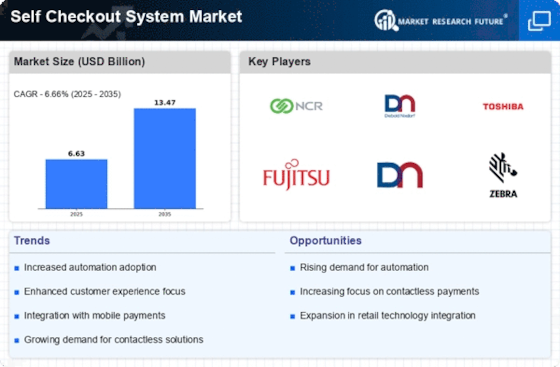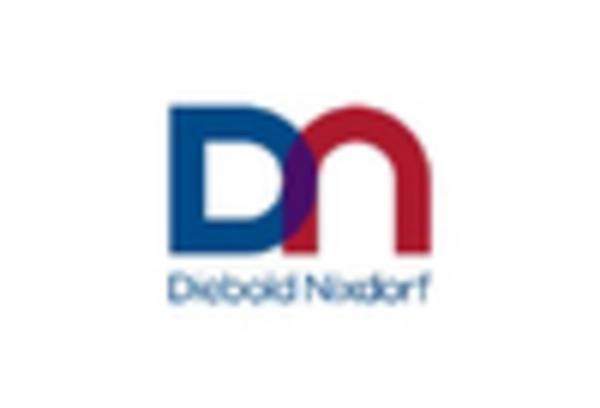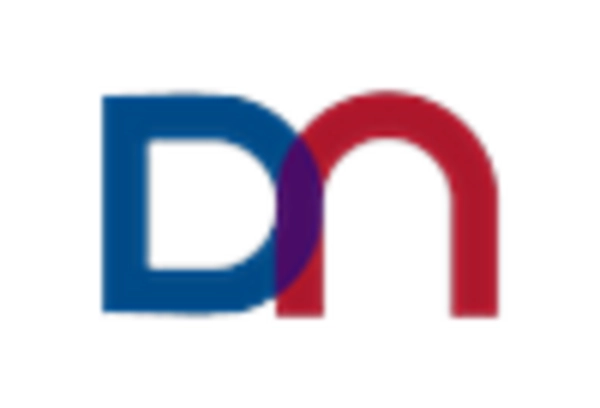Enhanced Security Features
Security concerns have become a pivotal driver in the Self Checkout System Market. Retailers are increasingly investing in advanced security features to mitigate theft and fraud associated with self-checkout systems. Technologies such as computer vision and biometric authentication are being integrated to monitor transactions and ensure compliance. Recent statistics suggest that retailers implementing enhanced security measures have seen a reduction in shrinkage rates by up to 15 percent. This focus on security not only protects retailers' assets but also builds consumer trust in self-checkout systems. As security technology continues to advance, the Self Checkout System Market is expected to grow, addressing both retailer and consumer concerns.
Technological Advancements
The Self Checkout System Market is experiencing a surge in technological advancements that enhance operational efficiency. Innovations such as artificial intelligence and machine learning are being integrated into self-checkout systems, allowing for improved customer interaction and error reduction. According to recent data, the adoption of AI-driven systems has increased by approximately 30 percent in retail environments, indicating a strong trend towards automation. These advancements not only streamline the checkout process but also provide valuable data analytics for retailers, enabling them to optimize inventory management and customer service. As technology continues to evolve, the Self Checkout System Market is likely to see further enhancements that cater to both consumer needs and operational demands.
Cost Reduction for Retailers
The Self Checkout System Market presents a compelling opportunity for retailers to reduce operational costs. By implementing self-checkout systems, businesses can minimize labor expenses associated with traditional checkout processes. Data indicates that retailers can save up to 20 percent on labor costs by adopting these systems, which allows them to allocate resources more effectively. Furthermore, self-checkout systems can lead to increased sales as they enable faster transactions and reduce cart abandonment rates. As retailers seek to enhance profitability, the Self Checkout System Market is likely to expand, driven by the financial incentives associated with self-service technology.
Consumer Demand for Convenience
In the Self Checkout System Market, there is a notable shift in consumer behavior towards convenience and speed. Modern consumers increasingly prefer self-service options that allow them to complete transactions quickly without the need for cashier assistance. This trend is supported by data showing that over 60 percent of shoppers express a preference for self-checkout systems due to reduced wait times. Retailers are responding to this demand by expanding their self-checkout offerings, which not only enhances customer satisfaction but also increases throughput during peak shopping hours. As consumer expectations evolve, the Self Checkout System Market is positioned to grow, driven by the need for efficient and user-friendly shopping experiences.
Integration with Mobile Payment Solutions
The integration of mobile payment solutions is significantly influencing the Self Checkout System Market. As consumers increasingly rely on mobile wallets and contactless payment methods, self-checkout systems are evolving to accommodate these preferences. Data shows that mobile payment transactions have surged, with a projected increase of 25 percent in the next year. Retailers are recognizing the importance of offering diverse payment options to enhance customer experience and streamline the checkout process. This integration not only caters to consumer preferences but also positions retailers competitively in a rapidly changing market. As mobile payment adoption continues to rise, the Self Checkout System Market is likely to expand, driven by the demand for seamless and efficient payment solutions.


















Leave a Comment